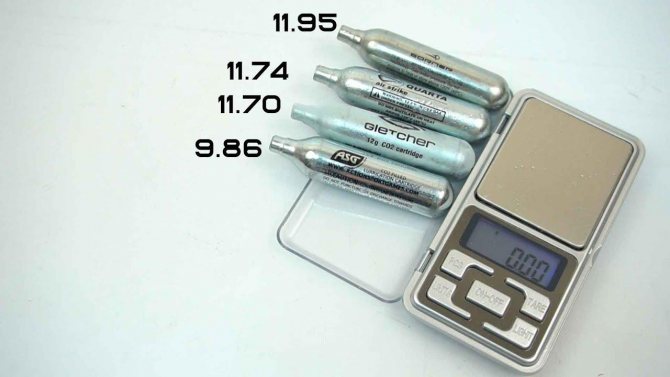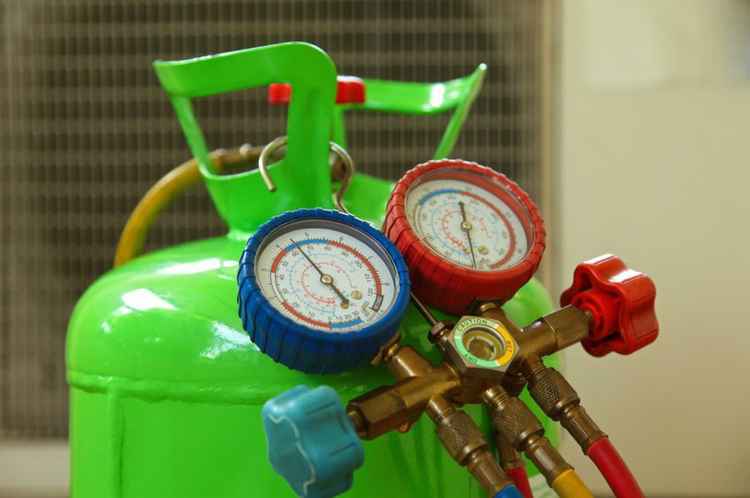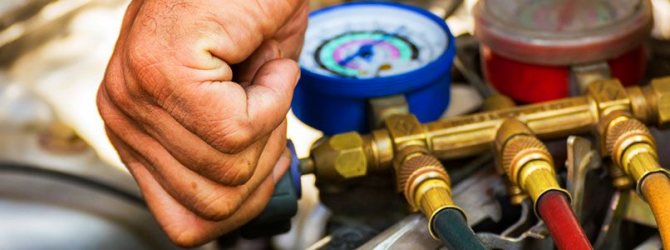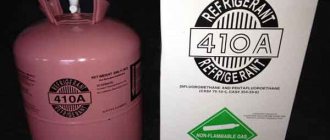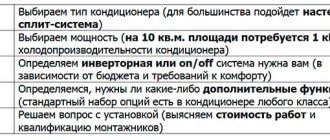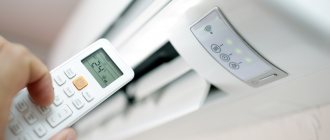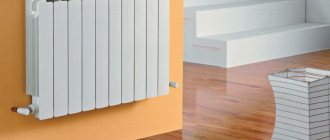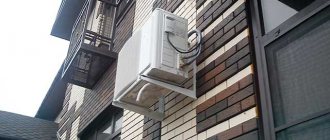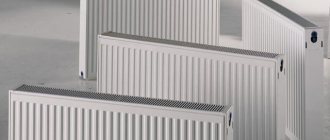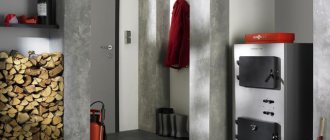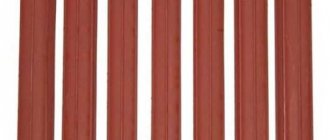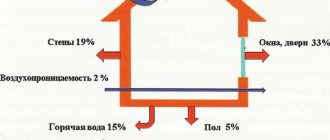- How to find out how much freon should be in a split system?
- Freon amount for refueling
- How to find out about an insufficient amount of freon
- How to refuel the system
- How to properly refuel the device
- Equipment diagnostics
All air conditioners and split air conditioning units operate on the basis of a refrigerant, namely freon. Sooner or later, every owner of any split system is faced with the need to refuel or completely refuel his device with freon. Therefore, in such a situation, it is important to know the amount of freon in the air conditioner. The required refueling volume depends on this.
How to find out how much freon should be in a split system?
Currently, there are several types of freon or refrigerant. In the system, this gaseous substance is not only a working element of air conditioning, but also a kind of lubricant for the compressor, which is in any installation.
Any split installation consists of two units. One is always installed outside the room, and the other inside it. From one compartment to another there is a cold line, through which freon circulates directly, as well as an electric cable and a drainage system. For wiring the route for freon, only tubes of a small cross-section in diameter, made of copper, are used.
The amount of freon in a split system directly depends on the length of the route for a given gaseous substance, as well as on the power consumption of the compressor. For example, a standard air conditioner track is up to 5 meters long. Even if you purchase a new system, then by increasing the length of the freon pipeline, you will have to refuel it into the system itself. That is why there is no unambiguous meaning for all systems, which could be guided by their refueling or full refueling.
The installation itself is usually filled directly at the factory, taking into account the available route length. It is worth noting that in air conditioning systems, the length of copper pipes is less than 3 meters.
Thus, it turns out that 0.15 kg of refrigerant is charged into the system for each meter of copper track at the plant. Plus, the power indicator of the built-in compressor is added to this mass. If we take the parameters in a general ratio, it turns out that a powerful installation has freon in it somewhere around 0.5 kg.
Naturally, over time, a gradual evaporation of freon occurs in each installation. This process is accelerated if errors were made during the installation of the system and the joints of the pipelines, or rather their connection, was performed poorly, and the gas gradually evaporated through the left slots. Of course, in these cases, before doing a new refueling or refueling, it is necessary to eliminate all existing flaws in the system.
Precautions when working with freon
If you are going to fill the air conditioner with your own hands - remember:
- Chlorine brands are harmful to the body. Avoid contact with mucous membranes (eyes, mouth), and do not inhale them.
- With a high concentration of freon, you can get poisoned. Therefore, do not work indoors - be sure to open the window and door, if available - turn on the hood (in the kitchen and in the bathroom).
- If liquid freon gets on the skin, you can get frostbite. Therefore, you only need to work with rubber gloves and closed clothing (not a T-shirt or a T-shirt with shorts).
If during operation the refrigerant gets on the skin or mucous membranes, it must be immediately washed off with water, and the place must be lubricated with petroleum jelly.
If you experience symptoms of suffocation, or any other abnormal signs, you must immediately stop work, leave the room and ventilate it.
Why do you need a screen for an air conditioner, and how to make it yourself?
What is a cabinet air conditioner: overview, scope, functions
Similar posts
Freon amount for refueling
How much refrigerant needs to be charged into the installation and how much freon is there - these data are usually indicated by the manufacturer. They are indicated on a metal plate, and the plate itself, or in other words, the nameplate is always located on the internal housing of the split system. Refueling of the air conditioner is carried out taking into account the indicators indicated there.
The amount of gaseous substance that needs to be added to the air conditioner is usually calculated using a device such as a pressure gauge. Using it, the value of the pressure value in the cooling circuit is determined.
How to find out about an insufficient amount of freon
Every owner should know how to find out that there is not enough refrigerant in the system, this will help to refuel on time. Usually the following factors indicate this:
- The air conditioner has become much weaker to cool the air in the room, even if it is operating at maximum mode.
- The installation has completely stopped cooling the air in the room.
- Frost appeared in the places where the pipes of the cold line and the valves were joined, which can be seen with the naked eye.
These are the most basic facts that directly indicate that there is not enough refrigerant in the installation. Before you begin to determine the amount of refrigerant in the air conditioner for refueling or its full charge, you yourself need to find out what kind of gaseous substance was charged into it. Currently, several types of freon of different brands are used for split systems.
The very first air conditioners and indoor air conditioning systems were fueled with R-22 freon. At the same time, the freon pressure in the air conditioner at outdoor temperatures from up to 30 degrees is 4.5 bar. Subsequently, scientists found that this gas has a very negative effect on the ozone layer of the earth. In addition, with a sharp drop in temperature, the system with such a refrigerant became very inefficient in operation.
Later, new models of air conditioners and installations began to be charged with more modern refrigerants, which, moreover, were completely safe in operation and did not in any way aggravate the state of the ozone layer of the atmosphere. So, today you are unlikely to find at least one installation working on this gaseous substance.
Of course, service companies know many nuances and various factors that should be taken into account when refueling the system with freon. But if you plan to do this work on your own, then their experience and knowledge will certainly come in handy.
Filling with freon - diagnostics of a car air conditioner
Symptoms of a lack of freon in the air conditioning system are quite easy to recognize - when air is pumped, the temperature in the cabin practically does not drop to the desired level. Should you wait for the problem to manifest itself? On the contrary, it is recommended to diagnose and refuel freon every season, and it is best to deal with the issue at the beginning of summer. So you will not find yourself in the very peak of the heat under the baking sun with an inoperative air conditioner.
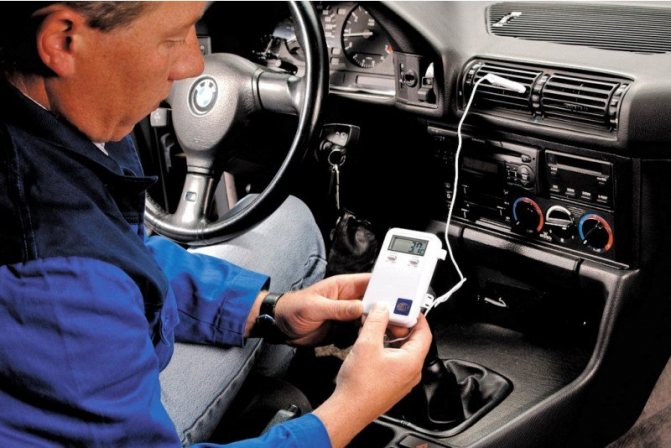
The reasons for the decrease in freon in the car air conditioner are very different. Most often, the problem lies in the system pipes, which have rubber seals at the compressor joints and loosen during driving. As a result, the refrigerant is released to the outside.
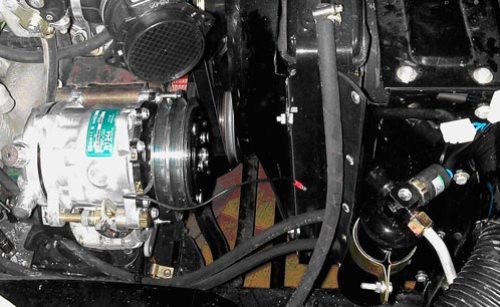

Freon leakage is easy enough to detect by looking under the hood. A common sign of refrigerant loss is greasy spots on the lines. Sometimes the loss is caused by a minor breakdown of the compressor when its valves are water hammered. This can happen due to improper filling with freon or air conditioner oil.Failure of high and low pressure freon sensors in the system is a more complex problem that can only be dealt with in a car dealership, after a thorough diagnosis of the car.
How to refuel the system
There are several fairly simple ways to cope with this task on your own.
- initially, the container in which the freon is located must be weighed.
- having opened the gas outlet, it is charged into the installation until the cylinder is empty to the required value.
In order not to be engaged in calculating the remaining amount of freon in the installation, it is possible not to refuel at all, but to perform a new refueling of the entire system. To carry out this process, all the freon that remains in the air conditioner is released outside through a special valve. The new amount of Freon in the air conditioner is determined using a scale. Only the amount indicated on the innermost case of the system is charged into the installation, the data that is always indicated by the manufacturer. Such refueling is a fairly simple and safe process.
The recommendations of experts say that it will be much more effective not to add the required amount of refrigerant into the split system a little, than to put an excess of it there. This is due to the chemical property of freon to pass from a liquid to a gaseous state. If there is too much refrigerant in the installation, then it simply will not have time to transform from one state to another.
It is possible to determine that there is not enough gaseous substance in a split system using an ordinary thermometer. True, this method will not work for inverter installations. So, a thermometer is brought to the fan. And if its temperature is 5-8 degrees, which is usually indicated in the passport of the device, then this is an indicator that the air conditioner is operating in normal mode, with normal power, and the amount of refrigerant is quite normal.
Cylinders for collecting freon: technical characteristics, device, areas of use
Freon cylinders are disposable and reusable (reusable). Unlike disposable cylinders, reversible cylinders have a thicker wall with a thickness of 2.8 mm, a massive base, a filling valve protection in a circle and a reliable valve, single or double, without a check valve that prevents refilling.
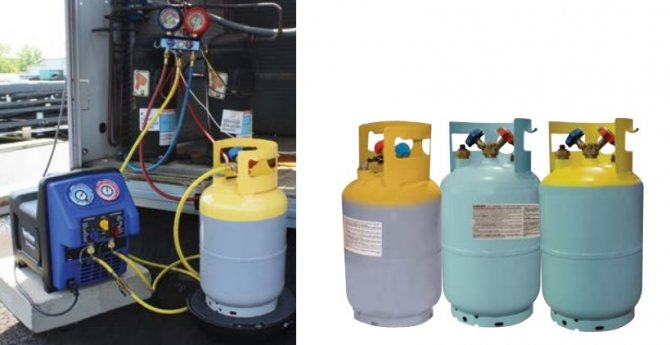

It is this feature of the design of reversible cylinders that allows them to be used for pumping and collecting freon from refrigeration units during repairs with the aim of reusing it or transporting it for disposal. Cylinders for collecting freon are divided into two types: two-valve and single-valve... Two-valve cylinders have two stopcocks with red and blue gates. The red knob has the inscription LUQID-liquid, the blue knob - VAPOR-gas, inside the cylinder from the red valve to the bottom there is a tube - the freon line. If you open the blue valve, then the freon from the cylinder comes out in the gaseous phase; if red, then in liquid. A single-valve cylinder does not have a freon pipe inside it, and therefore, in order for freon to exit in the liquid phase, the cylinder must be turned over. Before carrying out the procedure for downloading freon from a refrigeration unit or air conditioner, it is necessary to remove air from the recycle cylinder, to evacuate the cylinder using a vacuum pump. Recycling cylinders should not be filled more than 80% of the internal volume in order to compensate for the thermal expansion of freon. For pumping freon, portable stations for collecting and regenerating freon are used with and without the function of separating freon oil. Freon scales with a carrying capacity of 70 to 150 kg are used to control the filling level. It is convenient and correct to use scales with a cut-off, which automatically shut off the supply of freon to the cylinder when the specified weight is reached. For visual control of the process, use the INSPECTOR set.
Technical characteristics of cylinders used to collect freon: manufacturer: ITE, ECOTEZ, WC Cilindr, CPS, Vanleer brand: RCYL-12L, RCYL-30L RCYL-50L, etc. volume: 9.3; 12.5; 14.5; 26.2; 50 and 70.5 liters heights: 52, 64, 117 cm diameter: 23.28, 30 and 50 cm weight: 8.2; 14.9; 24.7 kg test pressure: 33, 42, 48 bar
In the warehouse of Kholodpromservice in Moscow, cylinders for collecting freon of various volumes and designs are always available, technical consultants of Kholodpromservice for 10 years of the company's existence have accumulated rich experience in the sale of recyclable cylinders for solving various technical problems.
Examples of the use of cylinders for collecting freon by Kholodpromservice customers:Companies engaged in the installation and maintenance of refrigeration equipment of industrial enterprises, their own engineering services of the departments of the chief mechanic of enterprises, pump out and collect freon 407, 22, 410, 507, 404, 134 during routine maintenance or repair of refrigeration equipment. Freon is reused or disposed of.
The tool required for pumping and collecting freon from refrigeration systems of industrial enterprises and distribution refrigerators: 1. Station for pumping out freon with maximum performance CPS TR700, article 006411 2. Set of 1/4 ″ angle valves for connection to service ports, article 00718 3. Set of filling hoses 300 cm long, article 00353 4. Freon scales with a lifting capacity of 100 kg standard or with cut-off, article 00256 5. Two-stage vacuum pump with maximum performance, article 00227 6. Transparent cylinder made of toughened glass INSPECTOR for visual control of the state of freon and the pumping process, article 01480 7. Cylinder for collecting freon, two-valve or single-valve with a capacity of 50 to 70 kg , article 500121
Service departments for the repair of household appliances and commercial equipment pump freon during the repair of commercial refrigeration equipment for the purpose of its further use, as well as collect freon from faulty household refrigerators in order to dispose of it at the request of the supervisory authorities. The collected freon is usually disposed of.
The tool necessary for collecting freon from commercial equipment, household refrigerators, coolers, etc.: 1. Station for pumping out freon of small capacity, article 00636 2. Service piercing for connection to the sealed filling pipe of the compressor, article 00646 3. A set of filling hoses 150 cm long, article 00350 4. Freon scales with a lifting capacity of 70 kg, standard or with cut-off, article 00252 5 . Vacuum pump, article 00219 6. Cylinder for collecting freon, two-valve or single-valve with a capacity of 10-26 kg, article 00634
Car services collect freon 134a from auto-conditioning systems in body shops before carrying out repair work on the car. The collected freon is reused.
The tool required to collect freon from car air conditioners: 1. A station for pumping out freon of small capacity or an automatic filling station, article 00637 2. A set of quick-release couplings for connecting to the filling ports of a car, article 01356 3. A set of filling hoses 180 cm long, article 00351 4. Freon scales with a lifting capacity of 70 kg, standard or with shut-off, article 00252 5. Vacuum pump, article 00222 6. Cylinder for collecting freon, two-valve or single-valve with a capacity of 10 to 26 kg, article 00634
When repairing refrigerators and refrigerated containers, freon 404a is pumped out for reuse.
The tool required to collect freon from refrigerators and refrigerated containers: 1. Station for pumping out freon of small capacity, article 00637 2. Set of 1/4 ″ angle valves for connection to service ports, article 01781 3. Set of filling hoses, length 240 cm, article 00352 4. Freon scales with a lifting capacity of 70 kg, standard or with cut-off , article 00253 5. Vacuum pump, article 00222 6.Cylinder for collecting freon, two-valve or single-valve with a capacity of 10 to 26 kg, article 00634
Two-valve cylinders are also used to flush the connecting pipelines of split-system air conditioners when they are transferred to another freon, as well as to remove acid and degradation products of the compressor when it fails. Tools required to flush the refrigeration circuit with a two-valve cylinder: 1. A set of adapters for flushing refrigeration systems and automobile air conditioners, article 00654 2. Flushing freon 141v, article 00021 3. A set of filling hoses 180 cm, article 00351 4. Freon scales with a lifting capacity of 70 kg, article 00253 5. Vacuum pump, article 00218 6. Cylinder with nitrogen, article 00685 7. Reducer for nitrogen pressure testing with a pressure adapter, article 00678 8. Transparent glass cylinder from the INSPECTOR set for visual control of the flushing process, article 01480 6. Cylinder for collecting freon, two-valve, article 00634
If you have any questions, please call tel. +7 (495) 796-25-39
How to properly refuel the device
If you refuel a split unit, adhering to and following certain rules, then there will be no damage to the system.
- The easiest and safest way to fill the unit with freon is to use a scale. Firstly, you can always find all the information you need on a metal nameplate that is attached to the block. Also, keep in mind that if you used a longer refrigerant line length than the manufacturer specified during installation, you will need to recharge the system.
- When there is a new charge of refrigerant into the unit, it is necessary to release the residual freon outside so that the oil remains inside the split system. To do this, the valve on the valve, through which the gas will escape, is slightly opened so as to prevent oil leakage. It takes about several hours for the refrigerant to leave the device.
Equipment diagnostics
The use of freon in refrigeration units, as well as in air conditioning units is simply irreplaceable today. And it is quite natural that after full or partial filling of the refrigerant into the air conditioner, it is necessary to carry out a thorough diagnostics of the equipment and check it for the tightness of the connecting joints and the efficiency of the entire installation.
These actions will help in the future to avoid refrigerant leakage due to loose joints and improve the performance of the entire installation. Sometimes it also happens that the efficiency of the air conditioner is not restored after refueling. Although the system itself is working properly. In this case, it is possible that some kind of damage could have occurred inside the device.

